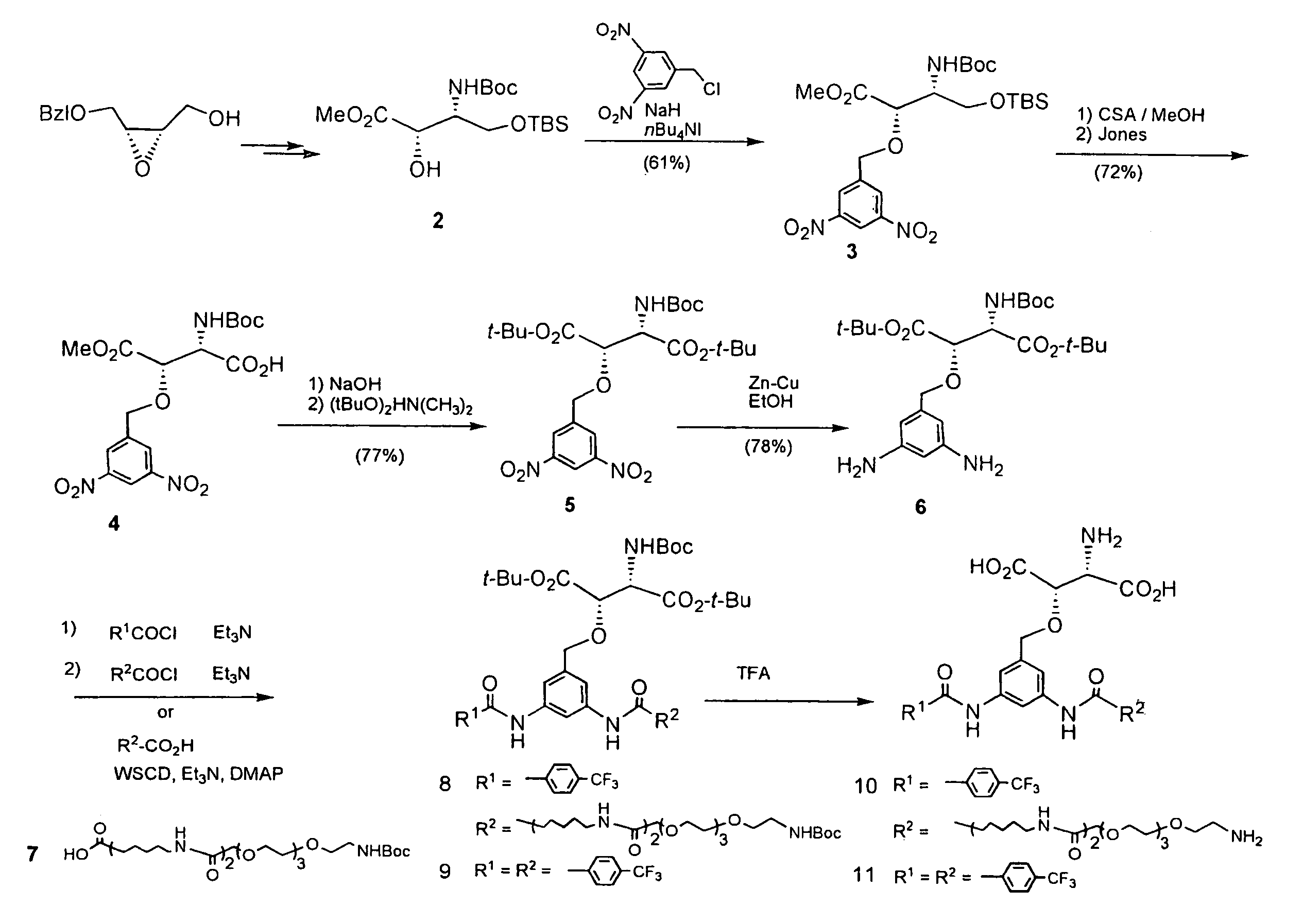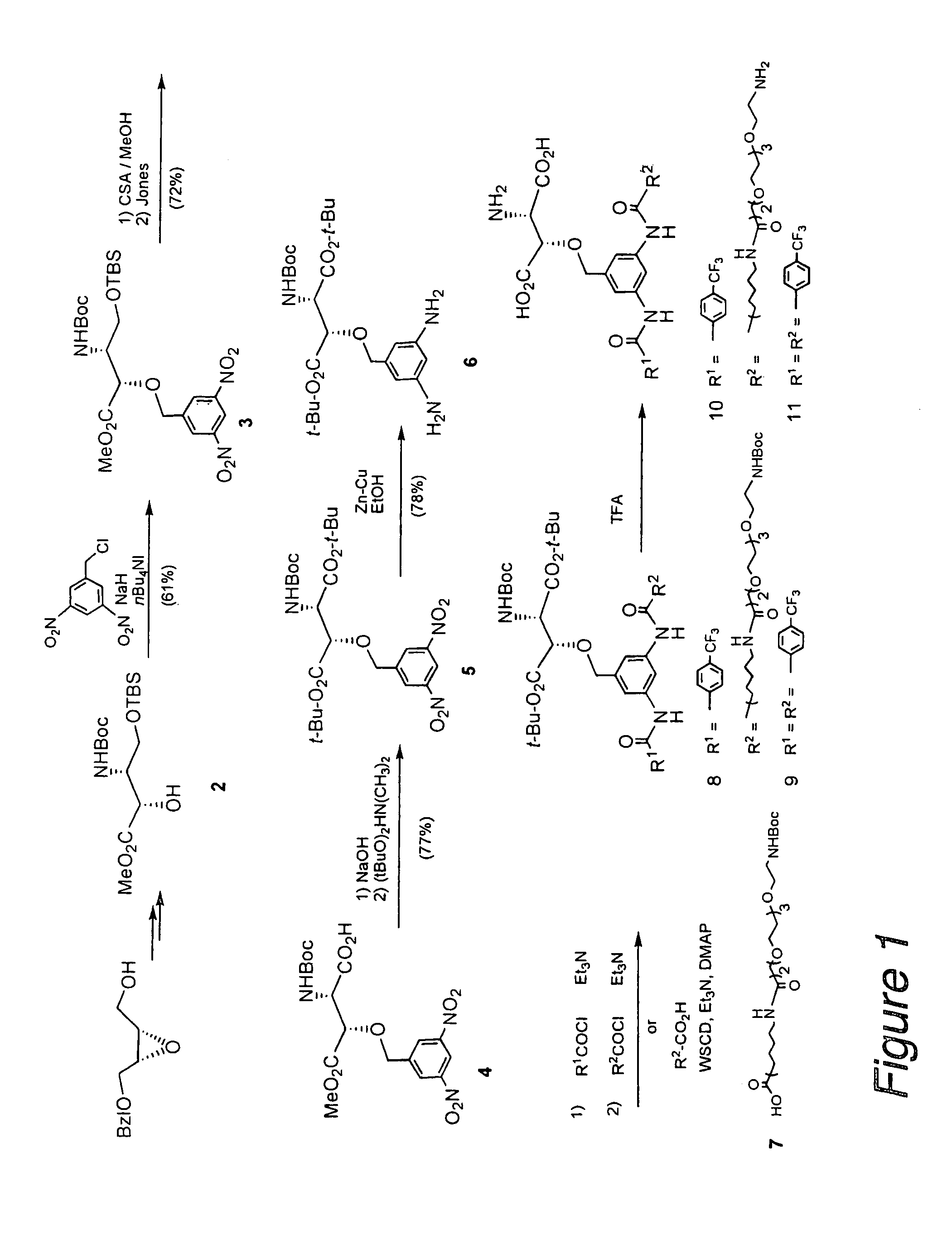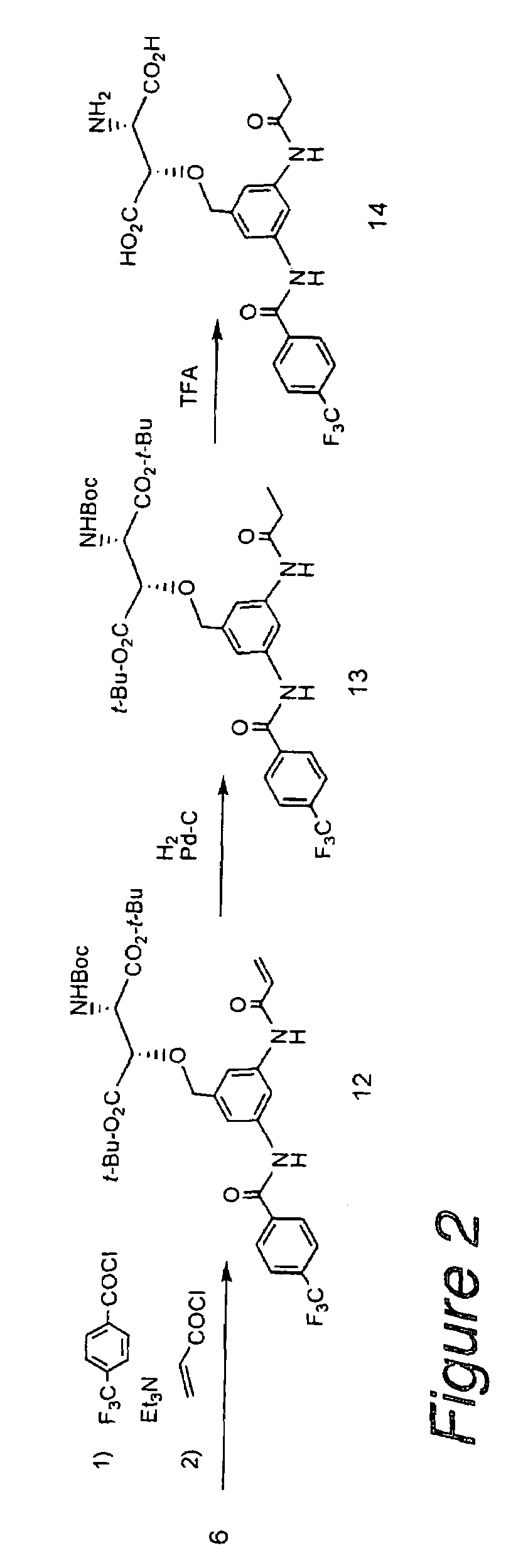β-Benzyloxyaspartic acid derivatives having two substituents on their benzene rings
a technology of benzyloxyaspartic acid and substituents, which is applied in the direction of instruments, immunoglobulins, peptides, etc., can solve the problems of protein loss of inherent functions, and achieve the effect of inhibiting the uptake of l-glutama
- Summary
- Abstract
- Description
- Claims
- Application Information
AI Technical Summary
Benefits of technology
Problems solved by technology
Method used
Image
Examples
example 1
Synthesis of (2S,3S)-3-(3-(6-(6-(2-(2-(2-(2-(2-aminoethoxy)ethoxy)ethoxy)ethoxy)acetamido)hexanamido)hexanamido)-5-(4-(trifluoromethyl)benzamido)benzyloxy)aspartic acid (Compound 10 in FIG. 1)
[0035]
example 1-1
Synthesis of Compound 3 ((2S,3R)-methyl 2-(3,5-dinitrobenzyloxy)-3-(tert-butoxycarbonyl)-4-(tert-butyldimethylsilyloxy)-butanoate) from Compound 2 in FIG. 1
[0036]To a solution of Compound 2 (500 mg, 1.38 mmol) in DMF (5 mL), sodium hydride (83 mg, 2.07 mmol) and tetrabutylammonium iodide (152 mg, 0.41 mmol) were added at 0° C. and 3,5-dinitrobenzyl chloride (450 mg, 2.07 mmol) was further added slowly, followed by stirring at room temperature for 30 minutes. Additional sodium hydride and 3,5-dinitrobenzyl chloride (150 mg, 0.70 mmol) were added and stirred at room temperature for 30 minutes. After addition of a 5% aqueous citric acid solution to stop the reaction, the reaction mixture was extracted with ether and the organic layer was dried over magnesium sulfate. The solvent was distilled off and the resulting residue was purified by silica gel column chromatography (ether / hexane=1 / 3, chloroform / methanol=300 / 1) to give the titled compound (455 mg, 61%).
[0037]Oil; [α]D +0.85° (c 1.2...
example 1-2
Synthesis of Compound 5 (di-tert-butyl ester of (2S,3S)—N(tert-butoxycarbonyl)-3-(3,5-dinitrobenzyloxy)aspartic acid) from Compound 3 in FIG. 1
[0038]To a solution of Compound 3 (455 mg, 0.84 mmol) in methanol (3 mL), a catalytic amount of DL-camphorsulfonic acid was added and stirred at room temperature for 18 hours. After addition of saturated aqueous sodium bicarbonate to stop the reaction, the reaction mixture was extracted with ether and the organic layer was washed with saturated aqueous sodium chloride. After the organic layer was dried over magnesium sulfate, the solvent was distilled off and the resulting residue was dissolved in acetone (5 mL), followed by addition of Jones reagent until brown did not disappear. After stirring at room temperature for 30 minutes, 2-propanol was added to stop the reaction. The reaction mixture was extracted with ether and the organic layer was washed with saturated aqueous sodium chloride. The organic layer was dried over magnesium sulfate an...
PUM
| Property | Measurement | Unit |
|---|---|---|
| temperature | aaaaa | aaaaa |
| pH | aaaaa | aaaaa |
| pH | aaaaa | aaaaa |
Abstract
Description
Claims
Application Information
 Login to View More
Login to View More - R&D
- Intellectual Property
- Life Sciences
- Materials
- Tech Scout
- Unparalleled Data Quality
- Higher Quality Content
- 60% Fewer Hallucinations
Browse by: Latest US Patents, China's latest patents, Technical Efficacy Thesaurus, Application Domain, Technology Topic, Popular Technical Reports.
© 2025 PatSnap. All rights reserved.Legal|Privacy policy|Modern Slavery Act Transparency Statement|Sitemap|About US| Contact US: help@patsnap.com



